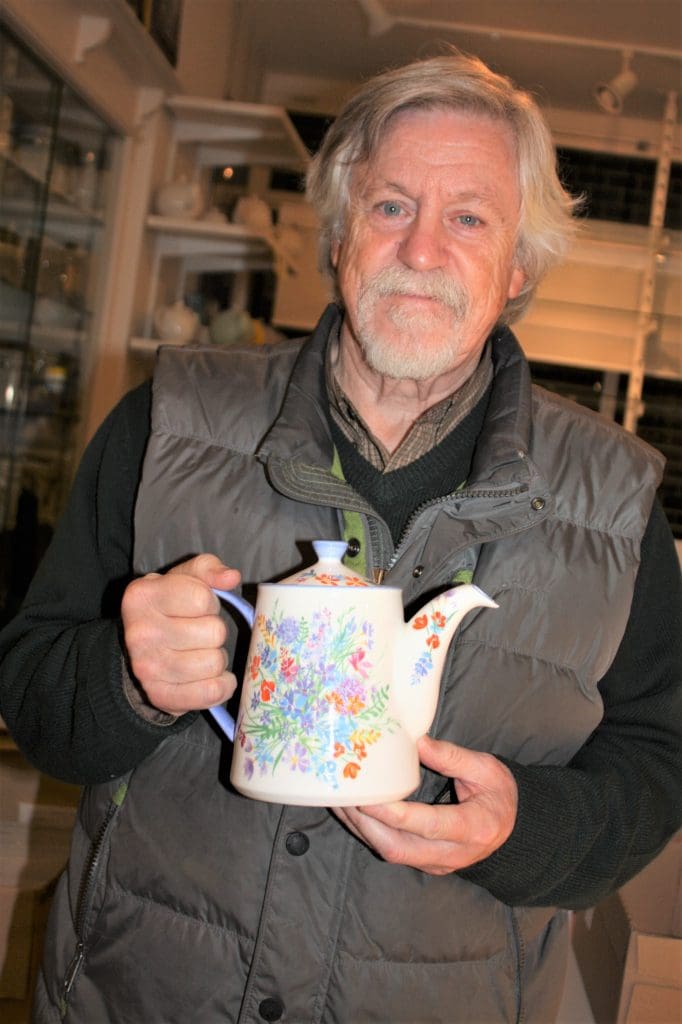
Designer David Birch creates a stir in the cosy world of teapots
By James Brewer
Behind the relaxation of many a comforting ‘cuppa’ is the stamp of an expert London designer. David Birch has spanned the world with sales of his classy designs for teapots and tableware.
The acclaimed British ceramicist has signed contracts with a succession of eastern nations for a flourishing manufacture of teapots and accessories. Such east-west links recall the ancient commerce which came to excited public attention in the 19th century when the famed tea clippers – of them, the Cutty Sark, now a museum ship at Greenwich is nowadays the best-known – raced from China with cargoes bound for the wharves of London. Now China is a main source of making teapots for Western and other markets.
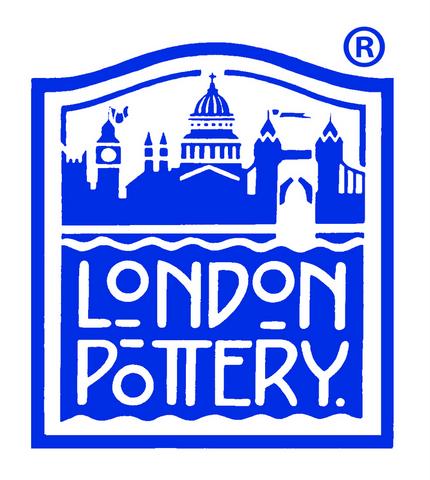
David founded The London Pottery Company, the trademarked name of his business that has sold countless teapots and ceramic items around the world. He has built a reputation as a brilliant designer, re-imagining a workaday household staple with an ingenious helping of colour and pattern.
Teapots have been advertised as “the most iconic item in your kitchen” and the artistry is to slake the thirst for elegant vessels balancing tradition and modern style.
Ten years ago, says David’s wife Brigitte, who handles the admin side of the company, the know-it-alls would scoff: “You won’t sell any of your teapots now because everyone these days is used to putting teabags in the cup.” But people do use teapots, insist the couple. Tea brewed in an infusion teapot, they say, is unrivalled for taste and refinement. “In one year, we sold 100,000 teapots.”
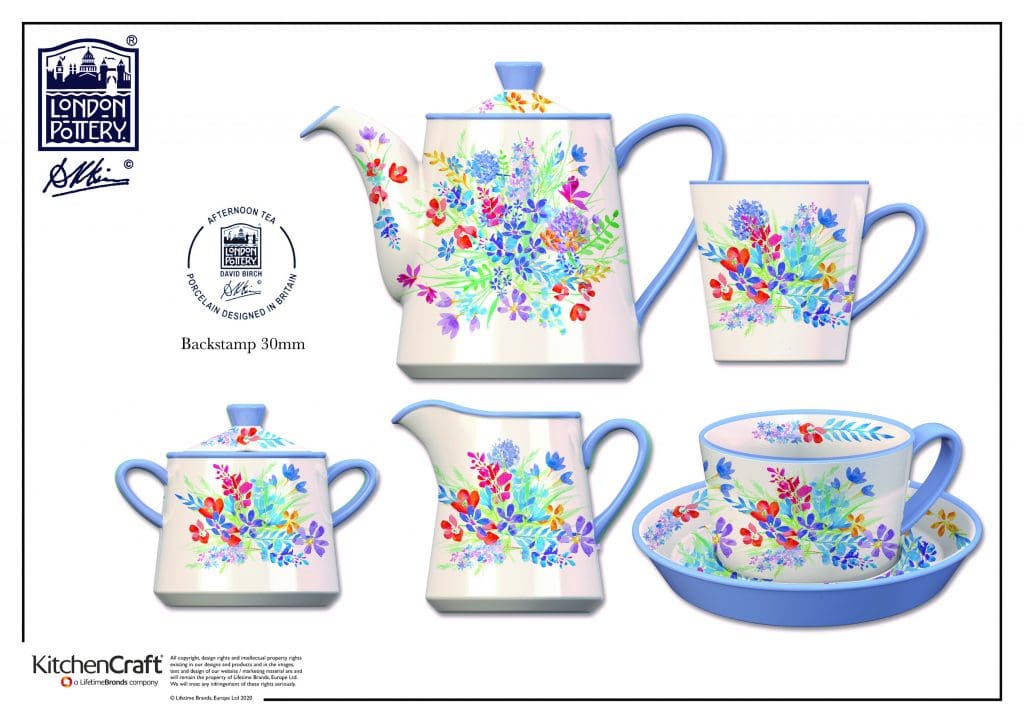
The company has enjoyed a remarkable commercial journey, for, as Brigitte says: “We started off on my kitchen table making Harrods butter dishes.” Huge numbers of teapots have been sold to the domestic markets in China and Japan. “We landed a big contract with a Japanese company,” said David, “and they decided they would pay for a TV shopping channel presentation – they sold 2,000 teapots in one hour.”
Achieving satisfying design is more than merely ensuring a teapot is easy on the eye. “I am very keen on functionality,” emphasises David. Alongside new forms and shapes of pots, he pioneered built-in tea filters, and developed drip-free spouts – making for smoother handling by eliminating the messy pour that blights many rival designs.
As a young man, David at art school tried various crafts and skills, but pottery was what fired his imagination, and he spent a year at Poole Pottery to absorb knowledge of the relevant industrial processes. He then enrolled at the Royal College of Art, where his aptitude started him on a path of creative design which together with well-researched manufacturing was to become a winning combination. At the RCA his professor was the eminent Lord David Queensberry. David remains a close friend of Lord Queensberry, the 12th Marquess of that title, who in the 1950s worked in the pottery industry before accepting the RCA tenure from 1959 to 1983. Among his distinctions, Lord Queensberry is a council member of the Crafts Council, a former president of the Design and Industries Association, a fellow of the Chartered Society of Designers and recipient of that society’s highest award, the Minerva Medal.
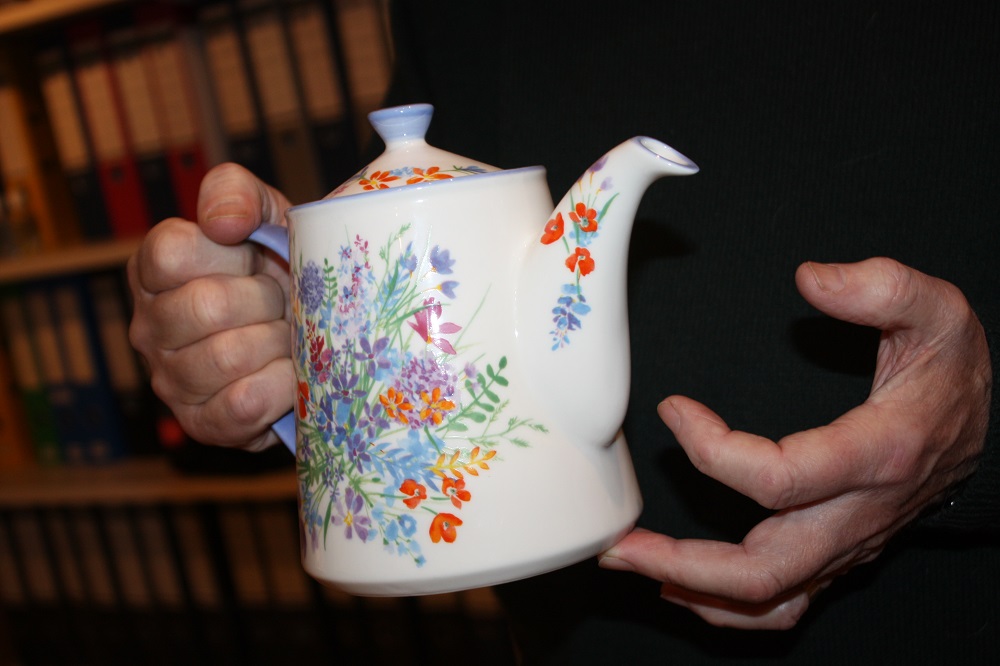
A defining moment in David’s career came when Lord Queensberry recommended he apply to fill the Indian government’s requirement for a graduate to review pottery production in the north of the country for the All-India Handicrafts Board. David says that he leapt at the opportunity. The contract culminated with a year teaching final-year ceramics students at the National Institute of Design in Ahmedabad.
Back in England, David was invited in 1977 to re-establish Fulham Pottery Co on the spot near Putney Bridge where it was originally founded (in 1671 by John Dwight, “scholar and master potter.”) It is the earliest known site in England to have produced high-temperature ceramics. Making pottery in London alongside the Thames goes back to the time of the Romans, and it peaked in the 19th century until it was eclipsed by the rise of the Potteries in Staffordshire.
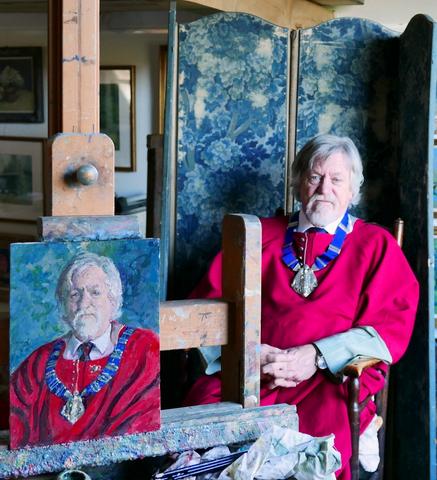
The rich history of the Fulham company using red clay finished to a silky-smooth appearance, known as Red Porcelain, was an inspiration for David who, as he puts it, designed every item in the tableware spectrum and attracted a government-sponsored Design Council award. While at Fulham he established important commercial contacts, among which was Harrods, which were to bear continuing fruit.
His dream was to run his own company, so in 1981 he launched with Brigitte the trademarked London Pottery Co Ltd, working out of a conservatory at his Wimbledon home. The first project was to create the logo, based on the riverside theme in keeping with the history of the early pottery workshops by the Thames.
Intentionally the logo pays tribute to the Arts and Crafts movement which David has followed enthusiastically all his professional life. Arts and Crafts was a reaction to the soul-less effects of industrialisation and the lowly status of the decorative arts. The artist chiefly associated with the movement is William Morris, who in 1881 moved his textile design and printing company to the banks of the River Wandle alongside which today is the Merton Abbey Mills historic and leisure site, and which happens to be a short distance from David and Brigitte’s home.
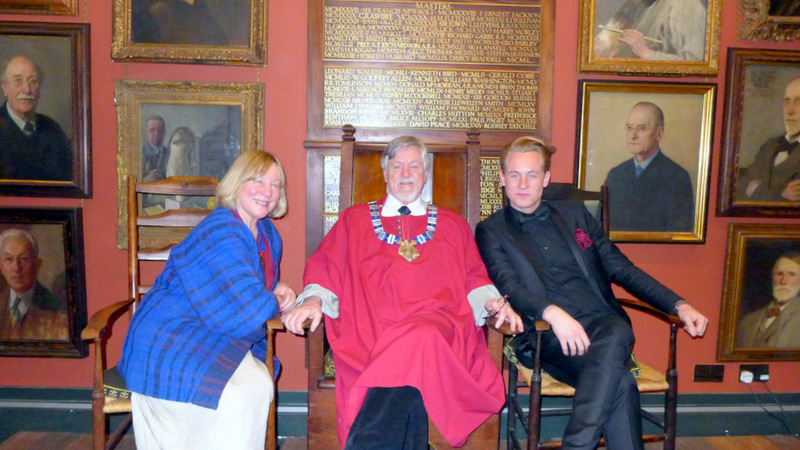
David is a stalwart member of the Art Workers Guild, of which he held the post of Master in 2016. He joined the Guild in the late 1970s through the sponsorship and encouragement of Guildsman George (Stevie) Stephenson, a renowned sculptor, and dedicated his year of office to his past friendship with that veteran.
The Guild was founded in 1884 by young architects and designers, many of whom were prominent in the Arts and Crafts Movement, to promote craftsmanship and excellence in the applied arts. Work by past and present Guild members can be seen all over Britain, in houses, churches and everyday objects.
Through the Guild David has met on several occasions the Prince of Wales who also loves the association and employs the skills of many of its members, especially architects.
The London Pottery Co initiated volume production to David’s bespoke designs at Stoke-on-Trent, leading to greatly increased sales to Harrods, both for the store’s food hall and the tea and coffee department. But with Stoke struggling over contract deadlines and with rising costs, David decided in 1983 to take his plaster moulds to set up production in Taiwan. From there he went on to Vietnam and Thailand, ending up in China, where most of the factories he deals with are family-run, and the increased warehousing necessary is available. This made him one of the pioneers in working with Far East pottery factories.
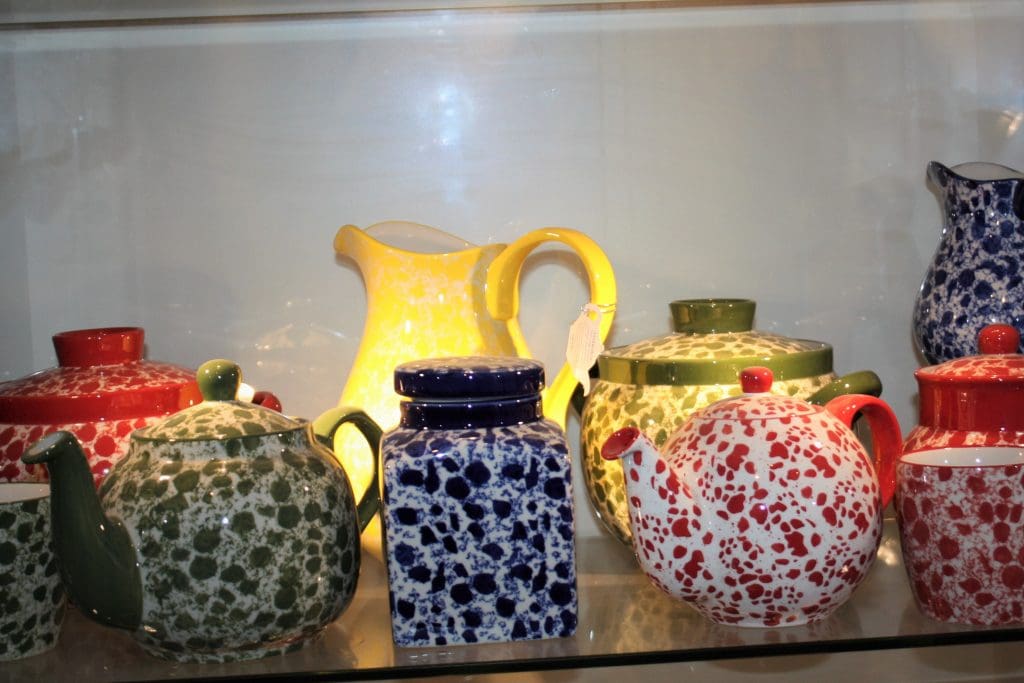
The trademarked Globe style teapot and its more traditionally shaped counterpart under the Farmhouse brand came to the market early in 1988. Sir Terence Conran bought wares from the London Pottery Co brand for many of his shops including Habitat, Heals and Conran Shop.
Although teapots remained the centrepiece of output, David applied fresh thinking to the housewares sector, where he became known as the king of the clip storage jar, one of the main products he had begun at Fulham in 1977. Harrods, Whittards, Selfridges and Fortnum & Mason have sold millions of the airtight pottery jars, which are ideal for provisions ranging from Stilton cheese to coffee and from chocolate to tea. In 1996 David reinterpreted the genre with stainless steel and glass, Homebase becoming one of the largest stockists.
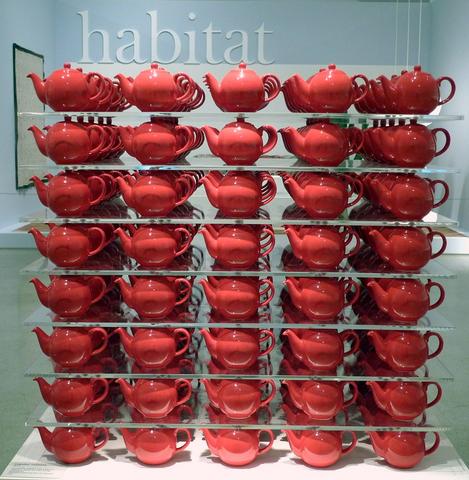
Traditionally made in wood, the clip canister was soon adapted for hand-cranked coffee grinders and storage for milled coffee. The coffee grinders “travelled the globe” from the Australian outback to European countries and coffee shops in Japan. The Amish community in Ohio advertised them in a catalogue called Everything Non-Electric. Many Amish groups eschew using power from the public grid, to avoid the perceived malign influence in the home of television, radio, and the internet.
His latest chapter in design again reflects David’s affinity with craft and nature and is a range he calls Viscri Meadow. It is named after the village of Viscri in central Romania and, he says, “delves into the romance of rural, medieval Transylvania.” David “fell in love with the untouched charm of Viscri and its surrounding meadows many years ago.”
He shares this passion for “the Elysian flower meadows” of the area with Prince Charles, who has owned a traditional, blue-painted farmhouse there since 2006. The house is of the type built by Saxon settlers from present-day Germany whose descendants have lived in Viscri for centuries. Since 2015, the Prince of Wales Foundation Romania has focused on preserving heritage architecture, supporting smallholders, and helping to develop sustainable businesses.
With its visual and royal appeal and its adoption as a Unesco World Heritage site, Viscri, which has a population of just 450, has become a big tourist attraction. A TripAdvisor review said in 2018: “What a charming rural idyll in the heart of beautiful Transylvania!” but a BBC report two years later found that “the atmosphere today is more urban theme park than traditional farming village.”

Another recent proud creation is what is called the Kaffe Fassett Jewel Squares teapot, the result of a collaboration between David and the San Francisco-born garment designer Kaffe Fassett, who was in 1988 the first living textile artist to have a one-man show at the Victoria & Albert Museum in London.
The four-cup teapot has sloping sides acting as a wrap-around canvas for Kaffe’s vivid, colourful floral pattern, and includes a stainless-steel oval filter with an interlocking tray to hold the filter when the tea has brewed.
Meanwhile, it is worth remembering who was responsible for the English custom of the 5 o’clock tea. This was Catherine of Braganza, the Portuguese princess who married Charles II in 1662. Portugal had been importing tea for a century, and Catherine had grown up drinking it every day. It is said that when she arrived in London, she brought a casket of tea and started afternoon get-togethers with her new circle at court. Probably the delicate pieces of porcelain for the ceremony would be on display in her private quarters.
The beverage remained almost unknown in Britain until Charles (who reigned from 1660-1685) granted a monopoly to the East India Company, spurring trade with China. That trade was fully prised open in the 19th century by questionable massive opium sales to China that financed payments for imports. On her maiden voyage, the Cutty Sark carried wine, spirits, and beer, and returned from Shanghai carrying 1.3m pounds of tea.
In the 21st century, the London Pottery Company is at the hub of a gentler and widely appreciated trade in tea ware – and everyone can happily drink to that.





